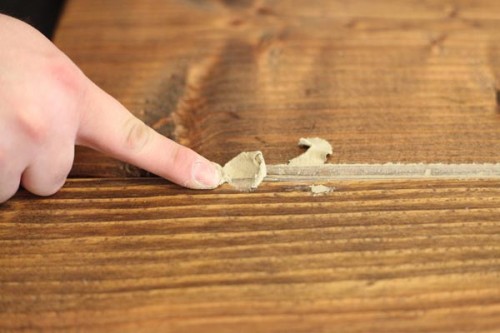Are you wondering how to use wood filler on furniture? Then you must be very clear about the fact that fillers are generally available in two varieties, paste and liquid. Liquid fillers are not useful because they are very thin and therefore they do not produce an effect on open-grained woods. Therefore, it is always good to use paste fillers for filling wood furniture because these fillers can be thinned accordingly to penetrate the wooden pores in furniture. Paste fillers that are based on cornstarch are available in different colors and they are best to be used for wooden furniture in different colors. Sanding filler is another variety of paste filler which dries transparently and it does not have any color.
Filler methods for wooden furniture
Wood filler generally produces a very glassy and smooth surface when it is applied post sanding or different sections of the refinishing process. However, the application of wood filler depends on the surface type that you are working on and also on the goals that you want to achieve.

Stained and unstained surfaces
In case you are working on stained surfaces, you should seal such surfaces post staining so that bleeding can be prevented. Such surfaces do not require any further treatment prior to filling. It is also important to seal unstained surfaces by applying a coat of sanding sealer, thinned shellac or any other good quality sealer. For finishing the piece of furniture with polyurethane, you need to make sure that the filler and the sealer are compatible. Allow the sealed wood to dry completely and then try sanding the surface lightly with sandpaper. Use a tack cloth for removing any sanding debris and then use the filler.
Using a paste filler
If you are using paste filler then the very first step that you need to take is thinning the paste filler with turpentine. Make the paste filler into a creamy and smooth batter. Wooden furniture with large pores requires thicker consistency in comparison to furniture with small pores. Use a clean brush for applying the filler and work it quite firmly within the pores along the grain and even across the grain. If you are working on very large surfaces, then fill one part at a time, so that the entire space can be covered evenly. Allow the filler to set for fifteen minutes until the filler surface is dull.
Treatment post-filler
The filled pores in the furniture should look very clean. Excess fillers should be removed completely so that the surface does not have a dry haze. Rub hazy areas lightly by making use of sandpaper. Remain very direful while doing this so that you do not remove the stain or the filler in the pores. Use a tack cloth for removing sanding debris and allow the furniture to dry for a minimum of twenty-four hours. Try sealing the filled surface so that filler bleeding can be prevented. The use of wood filler gives you the freedom of customizing your furniture as you like. These are some of the most important steps that you should follow when looking for the ways on how to use wood filler on furniture.

COMMENTS